FREQUENTLY ASKED
QUESTIONS
GENERAL
Yes, we would love to! Get in touch for a quote.
Yes, we would love to! Have a look at the design FAQ below and get in touch.
Our usual turnaround time for letterpress printing is 10 to 15 business days (2 to 3 weeks), once the digital plate proof is approved and the 50% deposit is paid. We do offer a rush service if you’re in a hurry.
Absolutely! Send us your address and any reference images for the project and we’ll post samples out to you. You’re also very welcome to make an appointment to come into the studio to chat about your project and pick up samples in person.
We prefer to quote each job on an individual basis as every project is unique. If you have any reference points or a budget in mind, let us know so we can make relevant suggestions on production.
Our business hours are 8.30am – 5pm, Monday, Tuesday, Thursday and Friday, though we tend to start early / knock off early on Fridays. We’re occasionally around on the weekends, teaching workshops, meeting clients or printing personal projects.
Yes, please. Sometimes the best person to speak to might be on the press so either email or call us on 03 9043 8444 to make a time to stop in. We also encourage you to come in for a press check on the day of production, to see your project on the press.
We run student tours throughout the year. If your class isn’t already on the list, let your professor know you’re keen and we’ll organise a tour of the workshop!
Of course! Send your loved ones a gift certificate for their dream stationery. Our letterpress printed gift certificates are personalised with your lucky recipient’s name and value, and posted anywhere in the world. Email us at hello@hungryworkshop.com.au to organise delivery.
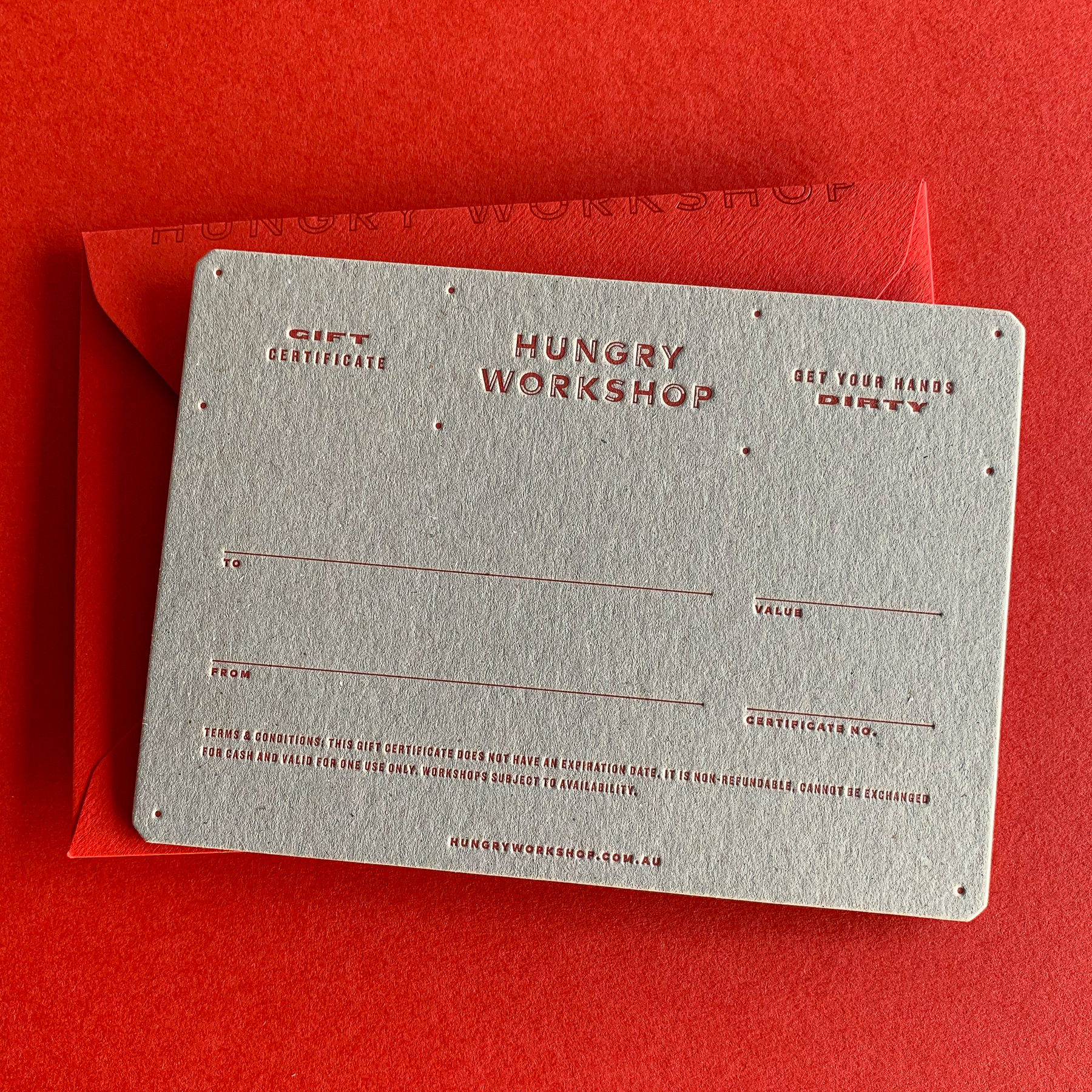

Yes! We send out a monthly newsletter with tips, interviews and insights. Sign up here.
Absolutely! You can find out more information about our workshops here.
We letterpress print, emboss, foil stamp and die cut at our studio in Melbourne, Victoria.
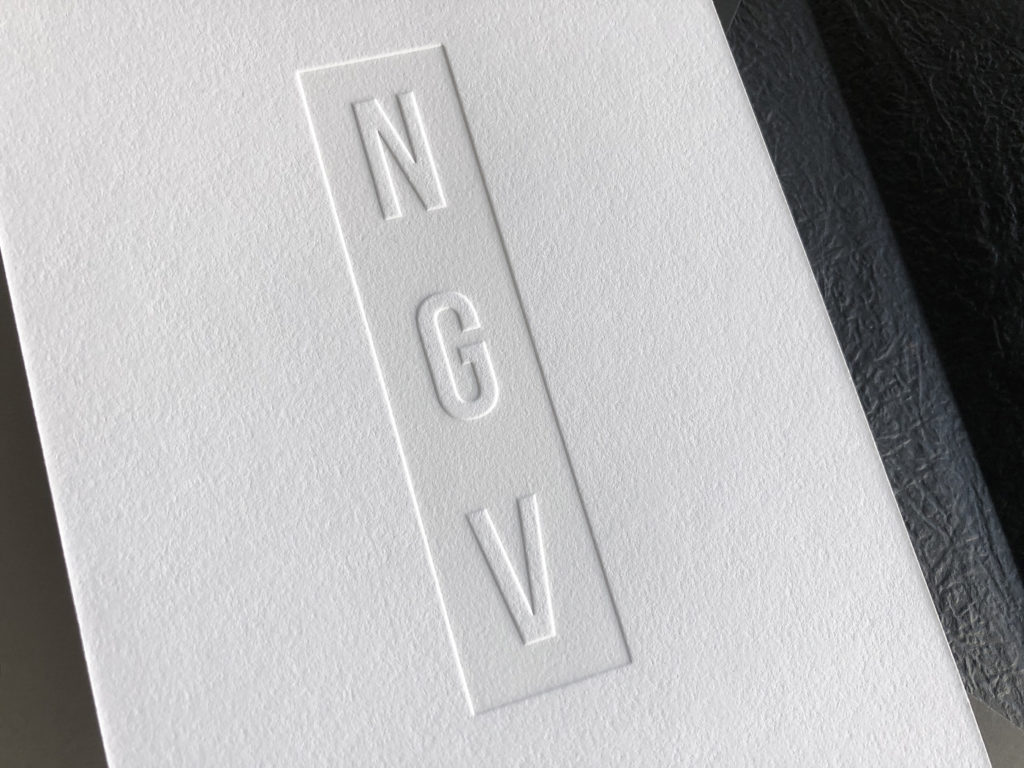

In contrast to more conventional printing methods, which lay ink or toner flat on the surface of the paper, letterpress printing presses ink into the paper resulting in an impression you can feel. It’s best to think of it like a hard rubber stamp, literally pushing the ink in to the fibres of the paper. We call this impression debossing, which is different from embossing.
Here’s an example of letterpress, designed by Studio Round:
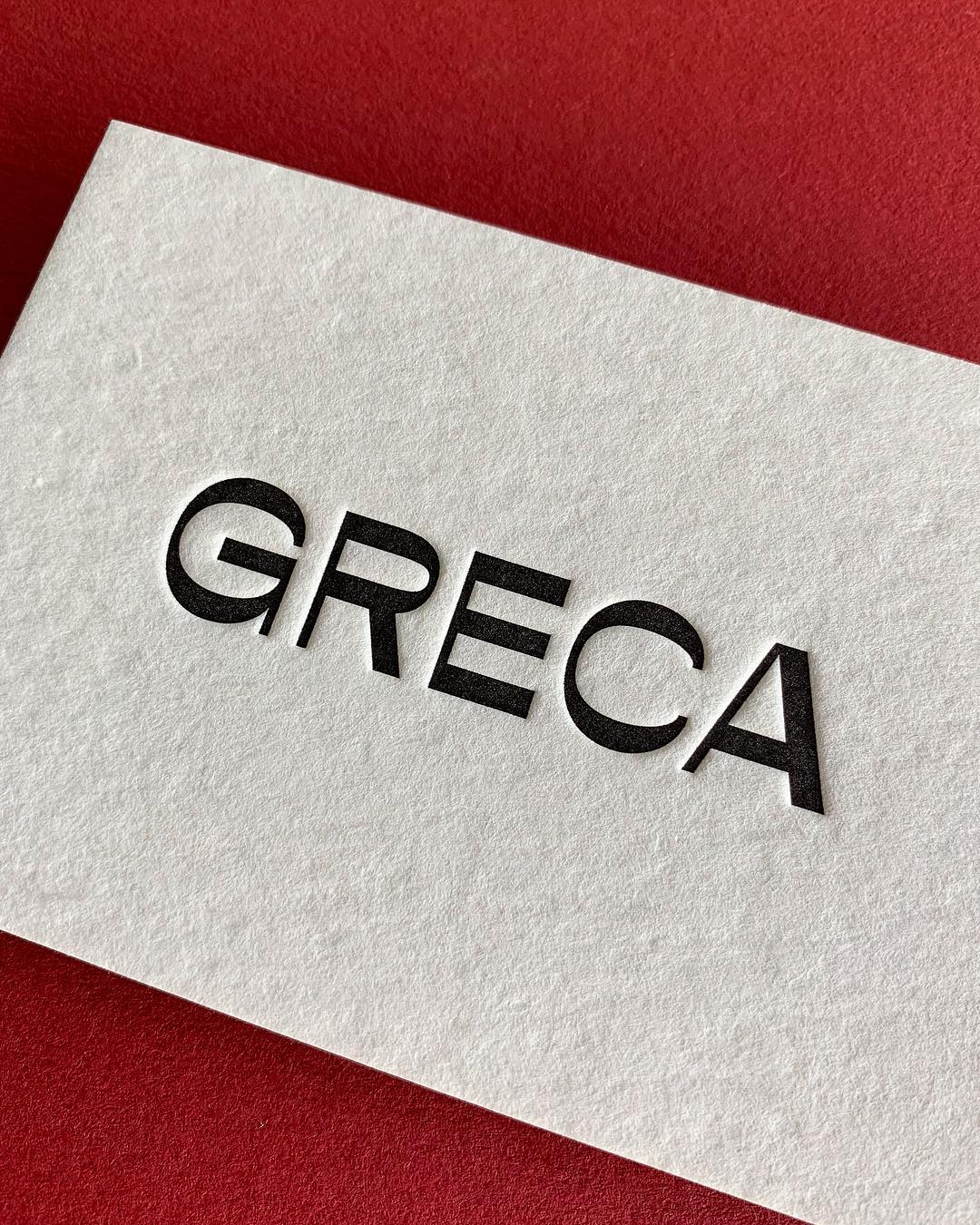

Foiling works in a very similar way to letterpress. A metal plate is heated, and the pressure from the plate, along with the heat, transfers the image onto the paper. While the foil colour range is limited compared to Pantone inks, foils are usually opaque (except for clear foil) and come in either matte or shiny finishes.
Here’s an example of foil stamped business cards (the zebra billfolds in the background are embossed), designed by TCYK:


For letterpress printing, the maximum sheet size is 380 x 500mm with a maximum print size of 330 x 482mm on our Asbern Proof Press.
For foil stamping and embossing, the maximum sheet size is 250 x 350mm with a maximum foil / emboss size of 188 x 218mm on our Heidelberg Windmills.
Further details on each press and the relative sizing is listed in the ‘Presses’ section below.
Embossing is achieved by two interlocking plates pressing together from both sides of the sheet. An emboss is used to raise parts of a design up out of the paper, leaving a negative impression visible on the opposite side.
Embossing works best with thick artwork. Small text and thin design elements usually render quite faint and a little lacklustre.
As a general rule, we recommend a 2.7pt minimum stroke weight for embossing, with 0.25pt spacing between each form. It really depends on the artwork, so please get in touch to chat through your project in more detail.
Here’s an example of embossing, designed by Trampoline:
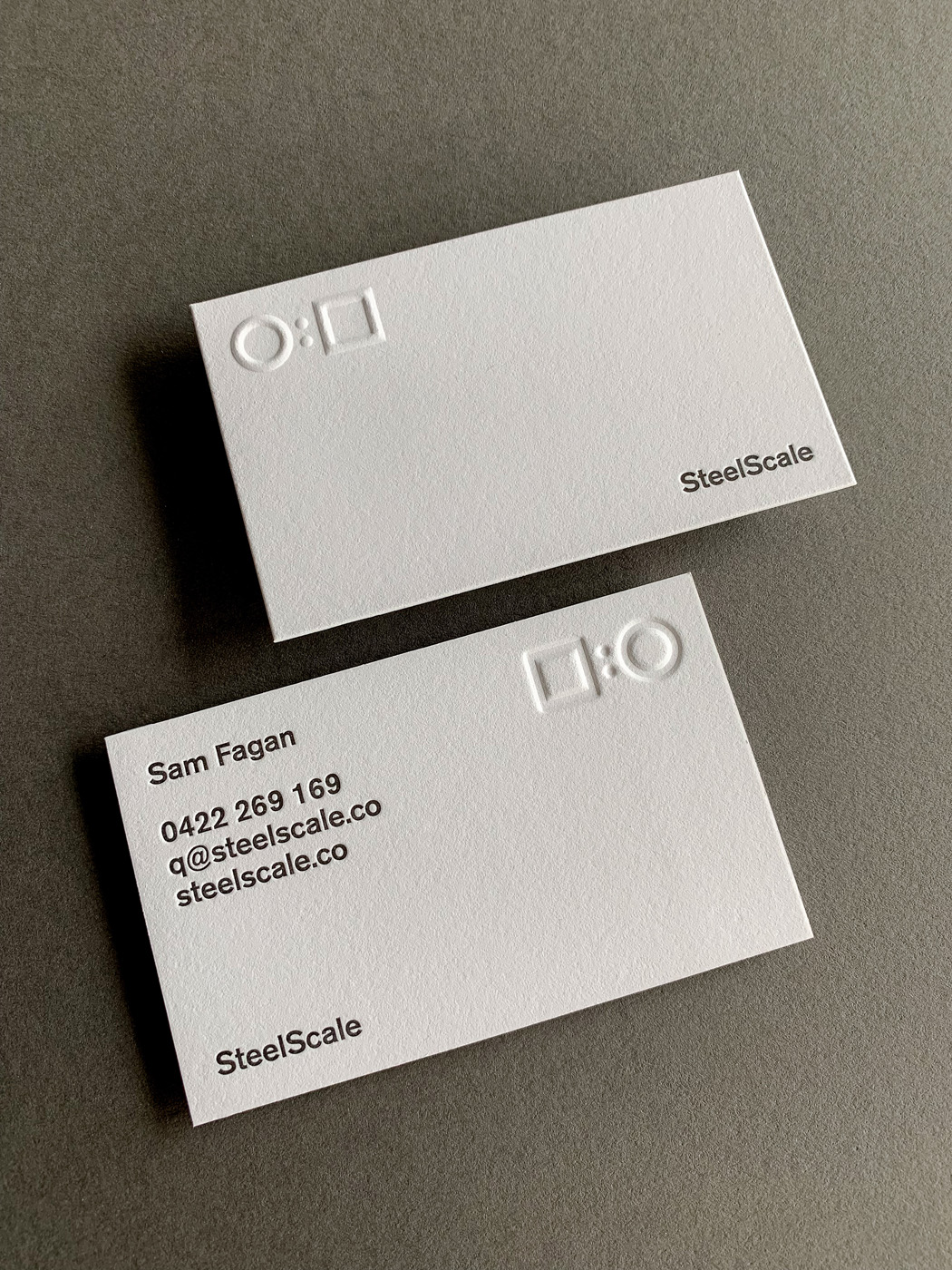

Debossing can be defined in a few different ways:
- The negative impression that is visible on the opposite side of an emboss.
- The impression that is created when a letterpress plate is pushed down into the fibres of the paper.
Blind letterpress is letterpress printing without ink. We use a letterpress plate to push the artwork down into the sheet, creating a deboss impression.
Here’s an example of blind letterpress (with gold foil) designed by Pop & Pac:
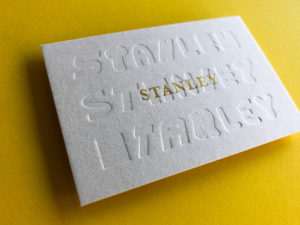

The minimum width we can letterpress print is a 0.25 point thick line.
The minimum width we can foil stamp is a 0.5 point thick line.
We can turn almost any digital font into a letterpress plate. Converting all live text to outlines will ensure nothing gets lost in translation from digital to physical.
Yes! Even though our presses are one colour machines, each colour per side is achieved with its own plate, set-up, ink mix and run through the press. The press has an ink well, which we fill with ink (chosen from the Pantone Solid Uncoated book). The ink well adds ink to the rollers, which roll over and ink the plate. Our Heidelberg Windmills have pin-point registration, so we can print multiple colours that are perfectly aligned.
Here’s an example of four colours letterpress printed and embossed, designed by Studio-Io:
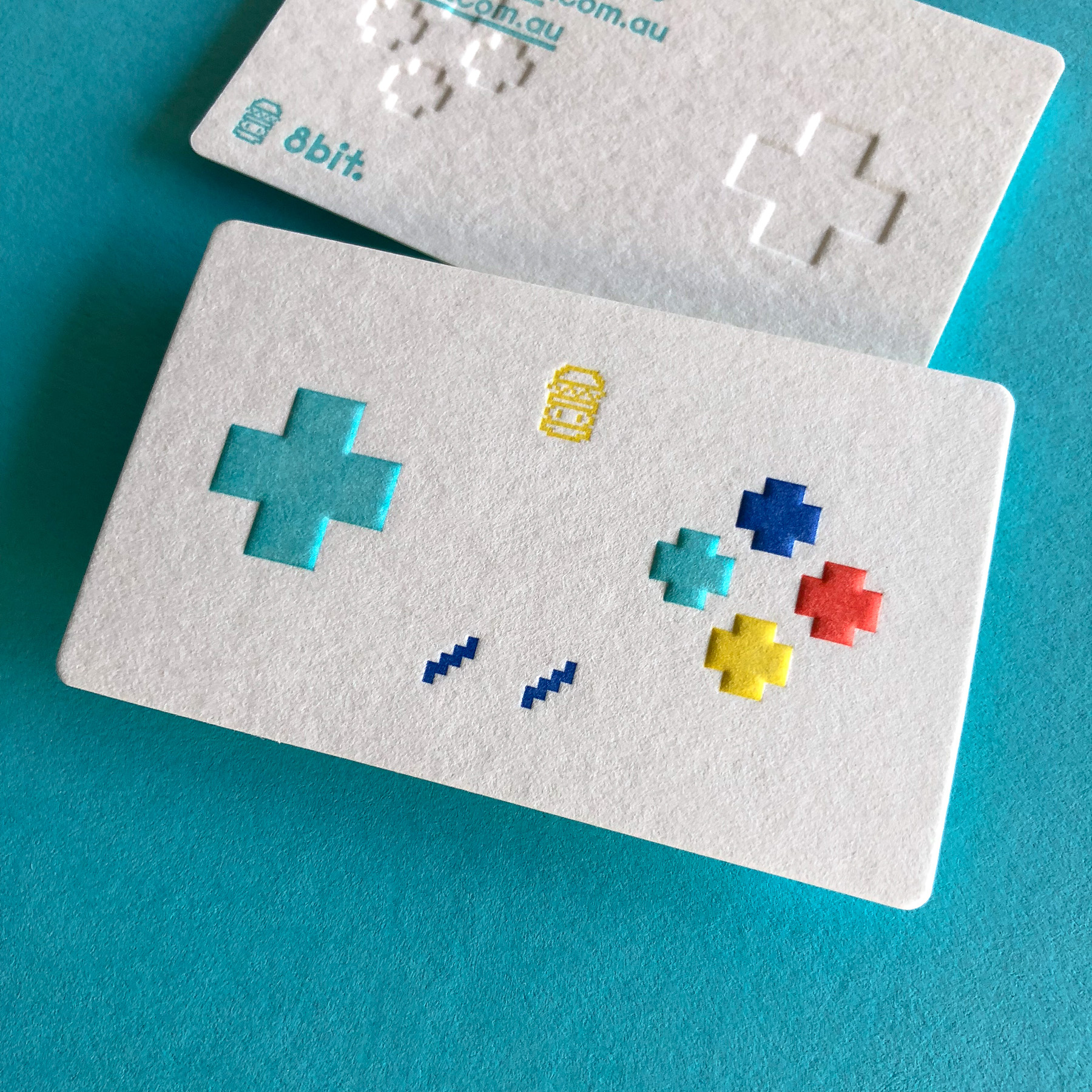

Not with letterpress, as white ink is translucent and disappears on dark stocks, but there are two other options for printing white on dark stocks:
- Foil stamp white – However, white foil is notoriously scratchy around the edges and the thinnest line we can foil stamp is 0.5pt.
- Digitally print white – This is done with six to eight hits of white ink on a HP Indigo Press. However, digital printing is limited by the weight of the stock (maximum ~350gsm thickness, though we can glue two sheets together to make it thicker) and it’s flat printing (no deboss impression).
Here’s an example of digital opaque white ink (and embossing), designed by Space Studio:
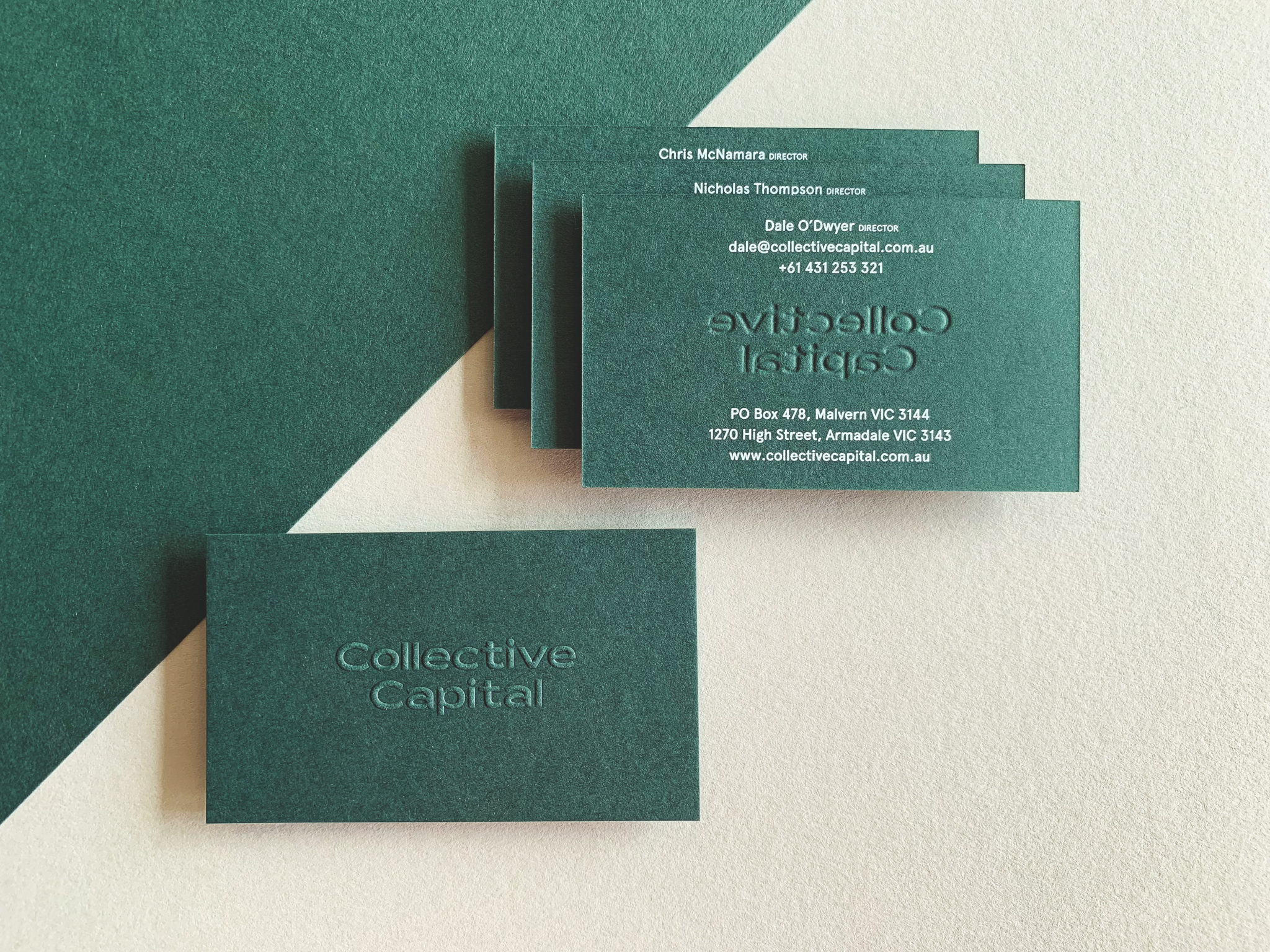

Yes, but photos have to be converted to a halftone (like old newspaper photos). We can either print single colour or multi-colour halftone images. Email us for the details on setting up halftone images for letterpress printing.
Here’s an example of a letterpress printed halftone, designed by A Friend of Mine:
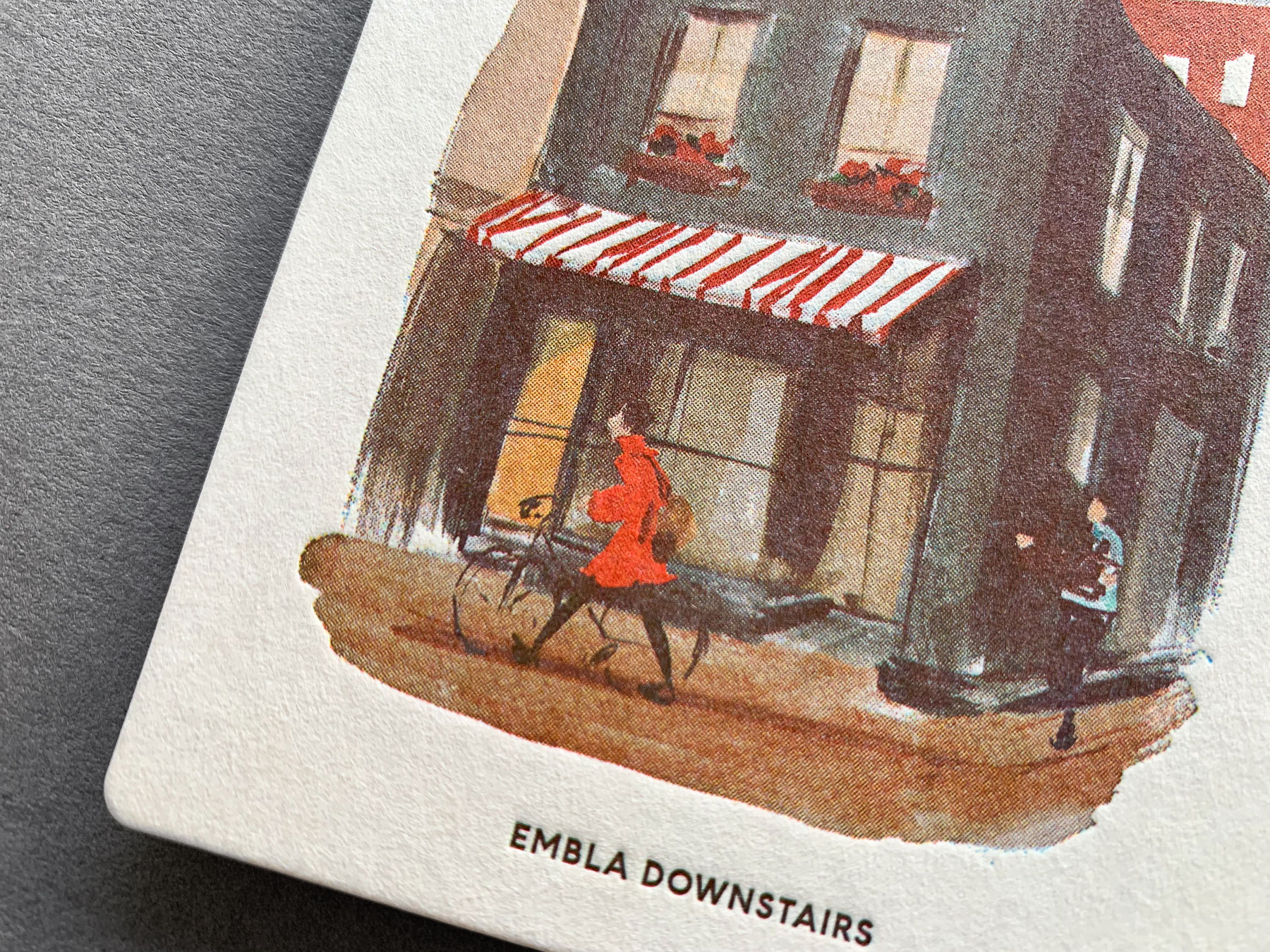

We can print on anything, from 40gsm newsprint to a 900gsm+ triplexed stock. We can print on paper cut from an old book, handmade paper with a deckled edge, even paper embedded with thyme seeds.
That said, we primarily print on uncoated stocks that are thick, soft and have some cotton content. We have our favourites, and are always happy to recommend a stock to suit a project and send samples.
When you’re setting up the final artwork please:
- Convert all of the live type to outlines (go to Type > Create Outlines)
- Ensure all lines are at least 0.25pt thick for letterpress / 0.5pt thick for foil stamping
- Set the artwork up in a Pantone Solid Uncoated colour for letterpress and/or a spot colour for foil stamping or die cutting
- Export it as a PDF with 3mm bleed and crop marks offset 3mm
Of course – we encourage it! We can adjust the depth of impression and the density of the ink/foil on the press on the day of production. You’re also welcome to bring your client along, take photos of the production (the presses make for great content!), make a video of the process, etc.
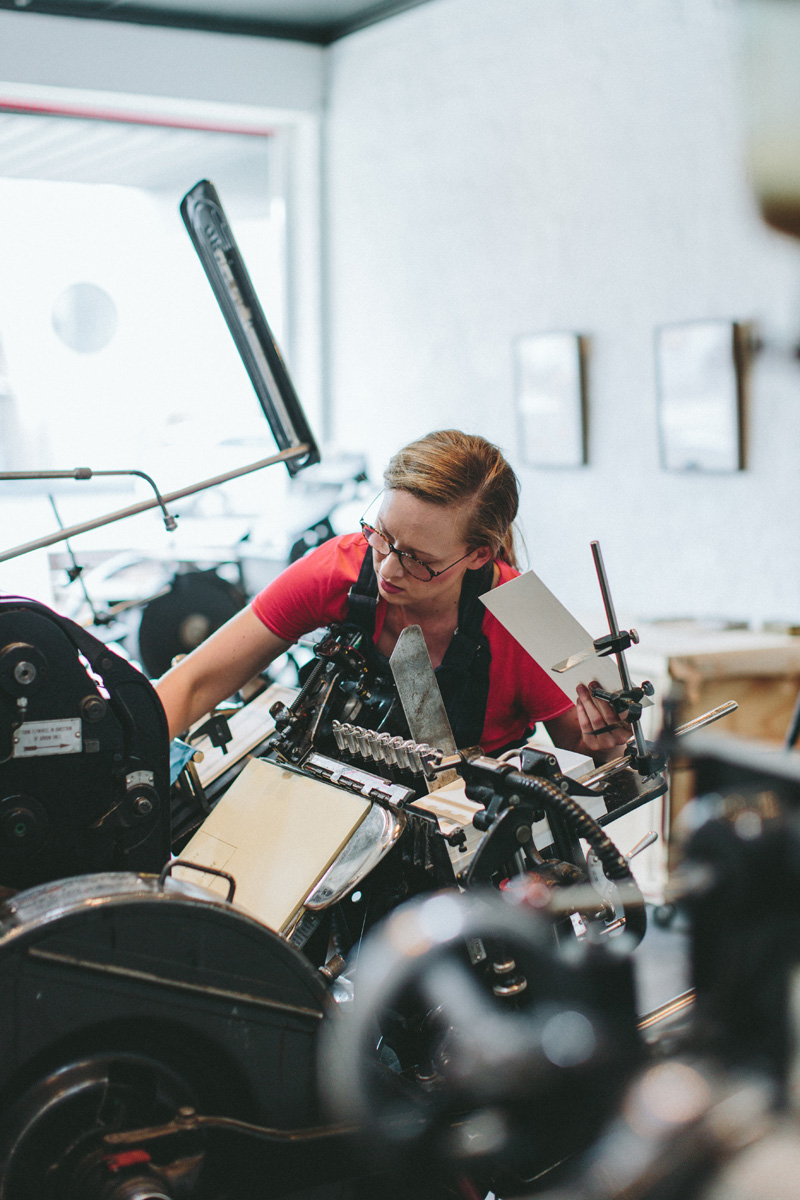

Presses
We have nine printing presses that all do slightly different jobs from letterpress printing, foil stamping, embossing, die cutting and scoring. See below for maximum artwork size, paper size and capabilities.
Maximum paper size: 250 x 350mm
Maximum artwork size:
Letterpress – 216 x 292mm
Foil – 218 x 188mm
Die cutting – 223 x 313mm
Capabilities: Letterpress printing, foil stamping, embossing, die cutting, scoring
Maximum stock weight: ~900gsm
Manufactured: 1960 – 1975
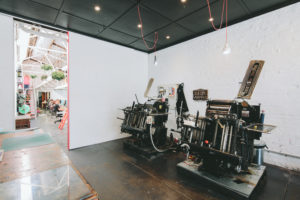

Maximum paper size: 380 x 500mm
Maximum artwork size:
Letterpress – 330 x 482mm (incl. crop marks & bleed)
BYO linocut / woodblock / handmade plate – 390 x 510mm
Capabilities: Letterpress printing, embossing, scoring
Maximum stock weight: ~350gsm
Manufactured: 1969
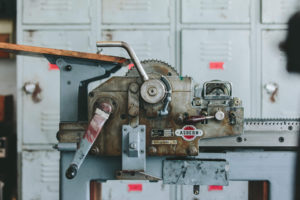

Maximum paper size: 260 x 420mm
Maximum artwork size: 216 x 292mm
Capabilities: Letterpress printing, embossing, scoring
Maximum stock weight: ~1200gsm
Manufactured: 1902 & 1920
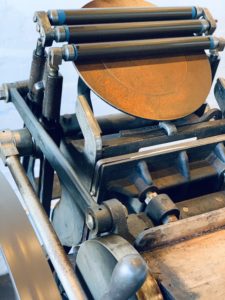

Maximum paper size: 355 x 508mm
Maximum artwork size: 299 x 470mm
Capabilities: Letterpress printing
Maximum stock weight: ~300gsm
Manufactured: 1926
Maximum paper size: 450 x 660mm
Maximum artwork size:
Letterpress – 330 x 482mm (incl. crop marks & bleed)
BYO linocut / woodblock / handmade plate – 435 x 650mm
Maximum stock weight: ~1200gsm
Capabilities: Letterpress printing blind or with hand inking rollers
Manufactured: 1950
We all do! The presses are oiled and cleaned on a regular basis, and if something breaks we can usually put our heads together to figure out how to fix it. If not, we have a fantastic press engineer on call to help with the trickier issues.
Design
Yes, we offer design services for all sorts of businesses and brands, big and small. We also design for individuals celebrating a personal milestone or event. We love designing intimate physical moments, applying stories, branding and logo designs to packaging, direct mail, stationery, business cards and invitations.
We treat all of our design projects the same. We start with a brief and we work together with our clients to create a completely custom design solution in response.
It always begins with a good conversation – preferably face-to-face or through a video call if you’re further afield. From there, we work together to clarify your requirements, build the brief and put together a quote outlining the scope of the project.
Once the quote is approved and a deposit is paid, we begin the design process. We work closely with our clients to make sure they’re involved in every stage.
Yes, of course! Send through your files, reference or ideas and we can work together from there. If you can come to us with a robust, clear brief it helps simplify the design process.
The aim of our portfolio is to showcase different methods of production and how they enhance design ideas. If you’re feeling inspired by something on our site, that’s great! We would love to work with you to produce something completely unique to you and your brief.
The work that we feature on our website and Instagram is credited to the designers that created it. Some of the work is designed by us, some of the work is sent to us for production only. We will not print or design reproductions or copies of anyone else’s design work for you.
Sustainability
Yes! Letterpress printing has been around since before electricity was invented and will be around long after the energy apocalypse. We have nine presses that we’ve saved from landfill and a couple of them are over 100 years old. Two of our presses are entirely off the grid, powered by our own two feet and fed by hand.
All of our presses are manually operated so there’s no chance of forgetting to flip a switch and leaving the machines running. We use large sheets of paper for each job and cut the sheet as efficiently as possible to minimise wastage. We also use a very small amount of ink, mixing each ink individually to create the perfect Pantone match and the minimum amount required for each project.
We aim to be as waste free as possible so we re-use what we can – scrap paper, packaging, envelopes and boxes.
We use stocks from a range of suppliers, many of them are recycled, but sadly not enough. All of the uncoated stocks that we print on are 100% recyclable.
We agree that they should be! However, the technology isn’t there yet. Paper is made using long fibres (cotton, wood or cellulose pulp). When paper is recycled the fibres are shortened, which means that recycled paper is more prone to breakage and can struggle to hold ink well.
Depending on the paper, fibres can be recycled an average of five to seven times before the quality and consistency of the paper is affected.
The good news is that virgin paper is one of the most sustainable resources on the planet. Groups such as the FSC ensure that forestry is responsibly managed so that the paper industry offsets production and the whole cycle is a sustainable loop.
FSC stands for the Forest Stewardship Council, a non-profit organisation that promotes responsible forestry practices. You’ll see their logo on many of the papers that we use. It means the materials for the paper came from a forest where harvested trees are replanted and standards are set for responsible practices in regards to the environment, wildlife and indigienous people. It’s the only scheme recognised by the WWF, Greenpeace and Planet Ark.
Virgin paper that has been certified by the FSC is no less environmentally friendly than recycled paper. Since paper can only be recycled a certain number of times, we actually need to keep producing paper so that we have paper to recycle.
We try to minimise wastage where possible so we cut the full sheet into smaller sheets as efficiently as we can. Our offcuts are used around the studio for press set-ups, notepads and personal projects, and then recycled. We also save the best offcuts for Dodgy Paper to create limited edition handmade stock. Let us know if you’re interested in printing on this and we can send you some samples.
In the paper industry pre-consumer waste is generated during a manufacturing process. For example, cotton stocks with pre-consumer waste are made with cotton fibres from offcuts in textile manufacturing. Post-consumer waste is created after a product has been consumed. Packaging from your cereal box or newspaper could make its way into the stock that we use to print your business cards. We print on stocks with both kinds of recycled waste.
We primarily use rubber based ink (except for the metallics which only come in oil based ink).
Depending on the colour our rubber-based ink is made up of:
20-30% vegetable oil (including soy and linseed)
12-35% petroleum
15-25% pigment
20-40% synthetic resins
If you’d like to avoid ink, we can letterpress print blind or emboss without any ink. There are limitations with the line weight for embossing, and legibility on contact details can be tricky with both options, but it can be worth exploring if the project brief calls for it.
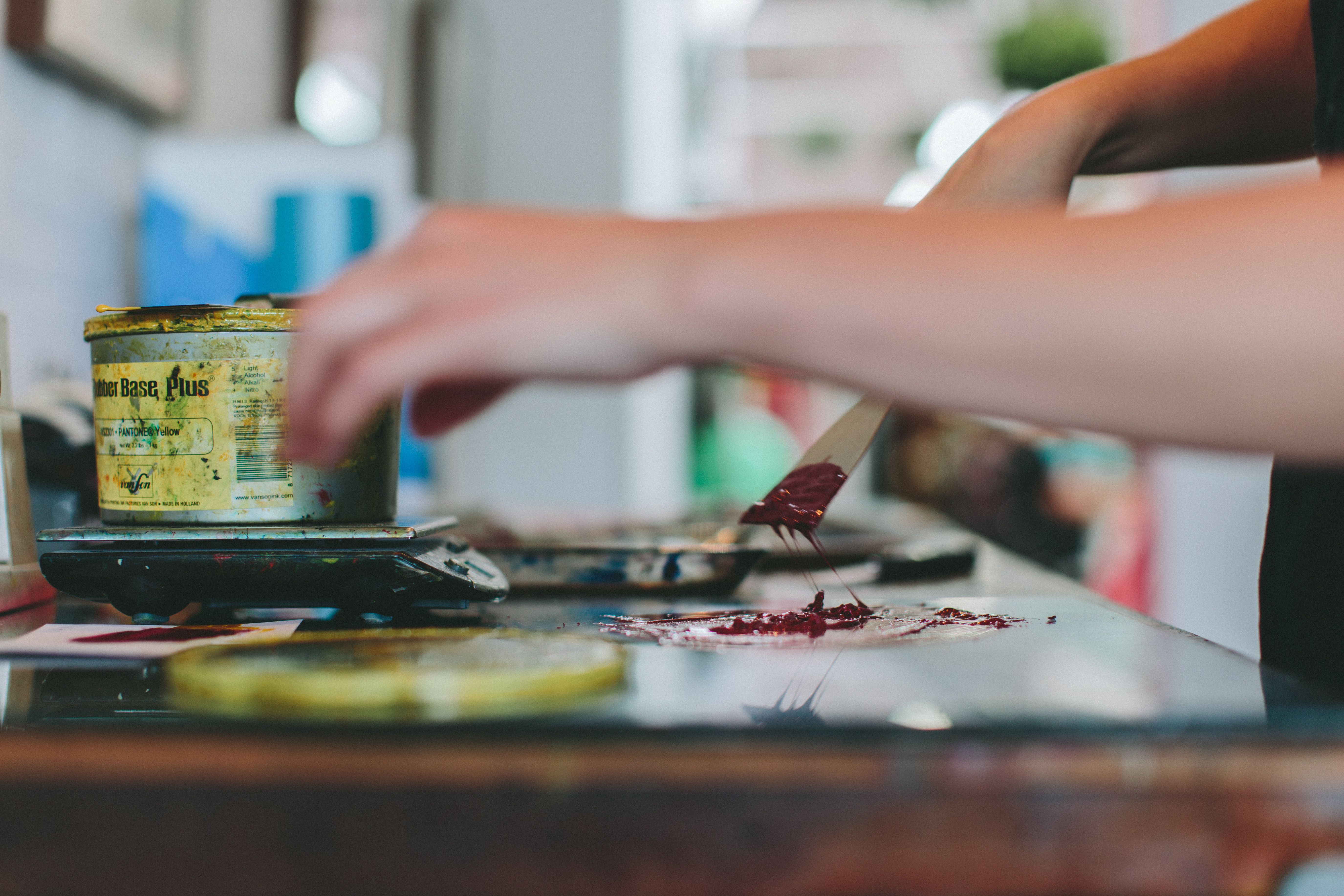

Workshops
Absolutely! You can find out more information about our workshops here.
Nope, our workshops are for beginners (or old pros) so no previous printing experience is necessary.
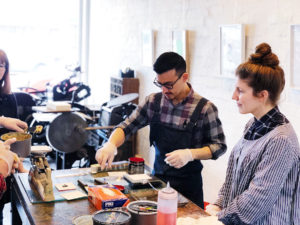

Yes! The ‘Modern Letterpress Poster Edition Workshop’ and the ‘Custom Letterpress Notebook Workshop’ both include creating your own artwork.
The presses are oily and inky, so please wear something you don’t mind getting dirty. Closed toe shoes are also required.
All of our workshops are now private and are designed for up to six people. You can team up with your studio or join up with friends for a day of creativity, collaboration and experimentation in our inky Brunswick East studio.
Get in touch if you’re interested in a corporate / team / studio tour for a larger group.
In the workshop we can print on two kinds of presses – our Chandler & Price, which is a hand-fed and foot-treadled platen press, and our Asbern Proof Press, a hand-fed press with electric inking rollers.
MORE QUESTIONS?
If you have any other questions, or would like further clarification, please get in touch!